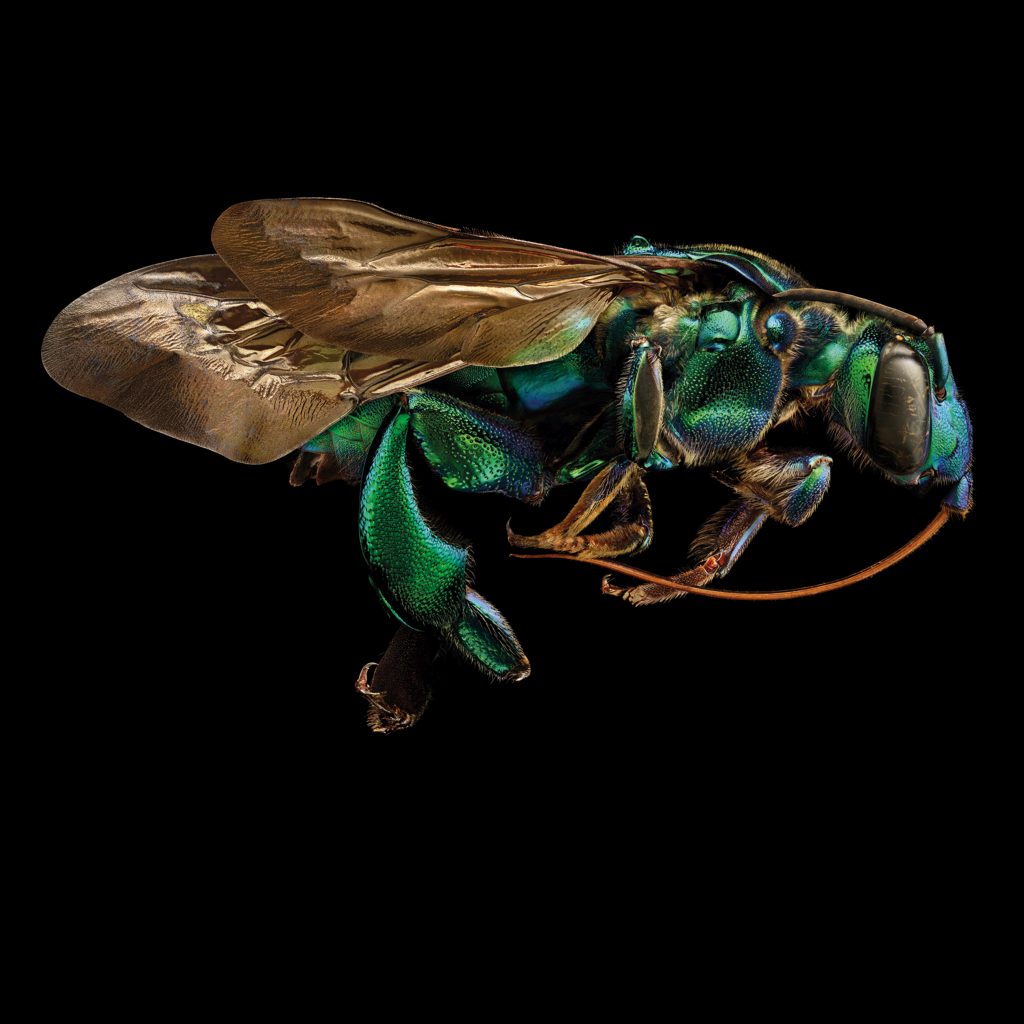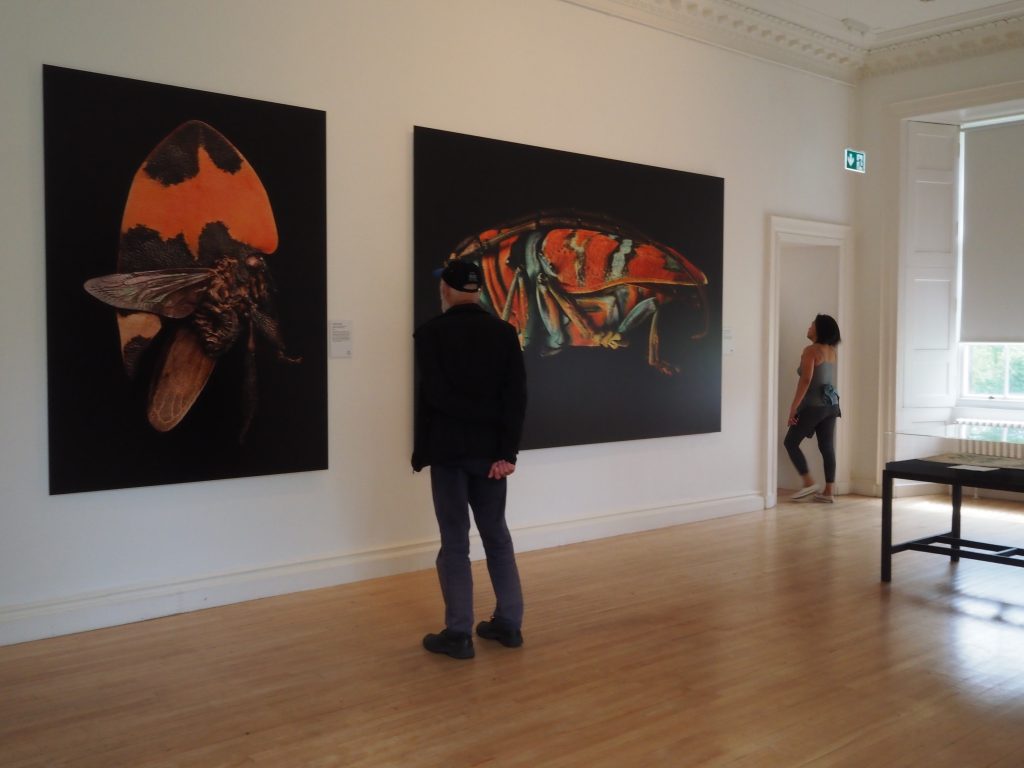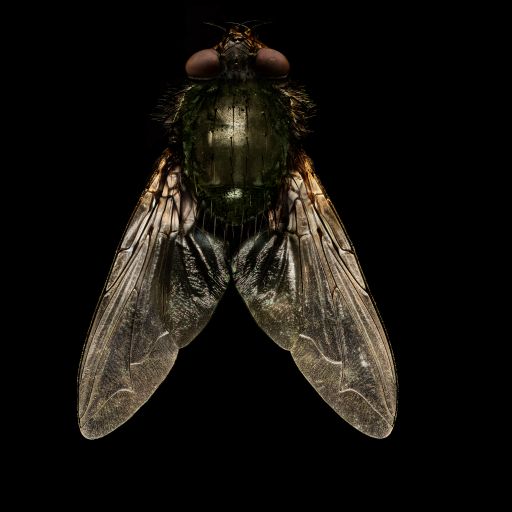
Image courtesy of Levon Biss.
Sometimes, an exhibition comes along that offers me a whole new appreciation of something that I normally take for granted. Inverleith House’s summer exhibition – Microsculpture – does just that. Over 10,000 visitors have already been to see Levon Biss’s ground-breaking photographs of insects. All the minuscule surface structures of each creature are revealed on a monumental scale, printed up to three metres tall! Biss developed Microsculpture with the entomology department at the Oxford Museum of Natural History. The project spawned from Biss’s son, who discovered a small ground beetle in their garden. He wanted to inspect it further with his Dad, so they pulled out his children’s microscope kit to have a closer peek. What they saw through the lens was a revelatory moment for Biss, as he recounted in his artist tour at Inverleith House – ‘When I first saw the back of the ground beetle, it reminded me of a galaxy […] all this time, it had been just outside our window.’ It was his son’s desire to see more, coupled with his own fascination, that led Biss to develop his new technique.
Biss uses a 36-megapixel camera, which has a 10x microscope objective attached to it via a 200mm prime lens. After posing and positioning the selected insect on an adapted microscope stage, Biss then takes around 8000 photographs of the insect, across approximately 30 different sections. Each of the sections is lit individually to best highlight its microsculpture, be that of an antenna, an eye, or a wing. As the microscopic lens only offers a tiny area of focus, Biss must take many photographs for each section. He then flattens these images into a single picture through various photo-stacking processes, until he has one fully focused section. He then brings together the 30 sections to create a final image. This whole process, to gain one image of an insect, takes approximately 4 weeks. There is a great video, in which he goes into more detail about his technique, here.

The incredibly intricate, and, sometimes beautiful, microscopic landscapes on the surface of insects are not only fascinating to look at but also often have a purpose:
‘It is thought that these microscopic structures alter the properties of the insect’s surface in different ways, reflecting sunlight, shedding water, or trapping air. Alongside these elements are minute hairs adapted for many purposes. They can help insects grip smooth surfaces, carry pollen, or detect movements in the air, to name but a few. The shape of these hairs is sometimes modified into flattened scales – structures so small they appear like dust to the naked eye. In some insects, such as butterflies and beetles, these scales scatter and reflect light, creating some of the most vibrant and intense colours seen in nature. ‘
Dr James Hogan, Entomology Department Curator, Oxford Museum of Natural History. (read more here)

In the exhibition at Inverleith House, we see 26 of Biss’s total 37 photographs of specimens from the Oxford Museum of Natural History’s ‘internationally important insect collection’. A personal favourite of mine is Biss’s image of the Blow Fly, as it highlights effectively how his technique can give us exciting new perspectives on elements normally invisible to the naked eye. Many people are used to thinking of Blow Flies as an unwanted buzzing nuisance in the home, however, these little flies are vital in recycling organic matter, and some even pollinate specialised plants. Biss’s photo shows the incredibly intricate structures to be found in each of these flies, from their translucent, iridescent wings to their dappled, dark, oily green bodies. Even though the Blow Fly image may not be as stunning as the emerald and gold Orchid Cuckoo Bee, or as immediately vivid as the orange and turquoise Jewel Longhorn Beetle, it is undoubtedly fascinating.

Image courtesy of Levon Biss.
Having travelled far and wide since it’s Oxford debut – from the United Arab Emirates to Canada, and from Switzerland to America (to name but a few) – Biss has decided that Inverleith House is the last stop for Microsculpture. So, make sure you come down and see his labour-intensive and awe-inspiring images before the exhibition closes!
Microsculpture is open daily 10.30AM – 5.30PM (last entry at 5.15PM) from 29th June – 22nd September. Free Entry.
